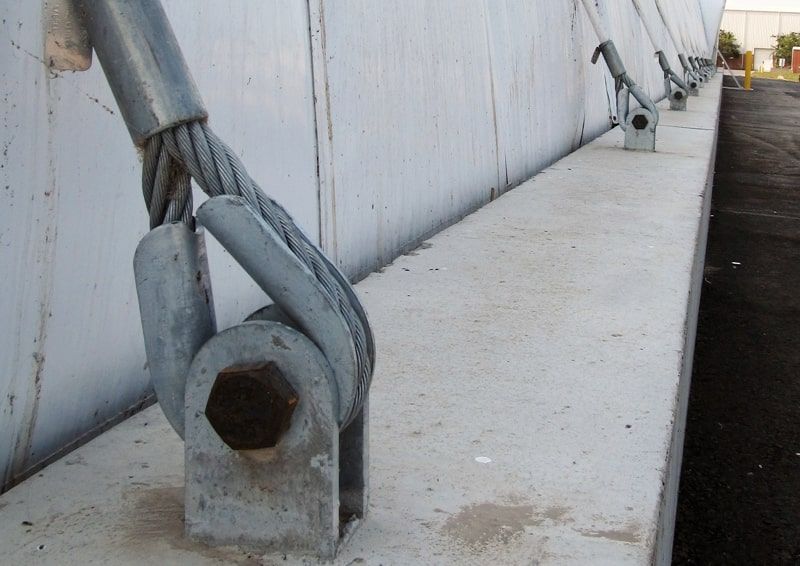
We collect basic website visitor information on this website and store it in cookies. We also utilize Google Analytics to track page view information to assist us in improving our website.
Ever wonder what holds a dome down to the ground? It’s a common question, and one that people often ask once they see the massive size of domes. A large soccer or multi-sport dome can be hundreds of feet long and several storeys high, so the force of the wind as well as the upwards force of the air inside is considerable.

The last thing anyone wants is to lose their dome, so it’s important to make sure a dome is securely fastened to the ground.
Like any large structure, a dome needs a firm foundation that is engineered to withstand the stressors acting on it and built to ensure what’s built (or attached to it) will stand securely. In the case of an air structure, this foundation is made up of a concrete grade beam.
Before a dome goes up, a concrete grade beam needs to be poured around the circumference of the entire dome site. Concrete gives the strength and stability to make sure that nothing will move once the dome is in place.
The process is quite like the pouring of a foundation for many other types of construction. The only difference is that the foundation is only required around the perimeter of the dome. Farley recommends that experienced foundation builders pour the grade beam foundation. We can provide the dimensions and specifics, but nobody knows concrete and foundations better than those who specialize in the field.
The next important component of a dome’s foundation is the aluminum profile. This is what attaches the dome fabric to the concrete grade beam.
During the construction of the foundation, an aluminium profile is installed directly to the grade beam before the concrete hardens. This aluminum profile, once the concrete has set, will then serve as the anchoring point for the dome around the entire circumference.
When the dome is ready to go up, the fabric is spread out and attached to the grade beam via the aluminum profile. Once secured, the dome can be inflated and every point along the foundation is inspected. Once given the OK, everyone can rest assured that the dome won’t be going anywhere!
While domes are considered a temporary or semi-permanent structure, the foundation is permanent. Many domes are seasonal, going up in the fall and coming down in the spring. The grade beam foundation, however, stays there year-round. And having the foundation built properly and securely makes it much easier to install and remove a dome depending on the season. Dome foundations are built to last!
Are you curious just how strong the foundation needs to be? While the force of the wind can be considerable, it’s not the only thing trying to lift a dome off its foundation. Check out our blog on the upwards force of the warmed air inside of a dome!
